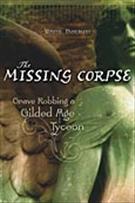On October 27, 2010, the true crime community lost one of its greatest minds, strongest supporters, and best friends. I’m talking about Rick ‘Mad Dog’ Mattix.
I haven’t fully accepted the fact that there will be no more wryly humorous e-mails from Rick, discussing his current projects and encouraging me to persist with a good idea. Even if he was having a bad day, he could reframe all the aggravating people and incidents in a way that made me tell him more than once that he should write skits for Saturday Night Live.
In 2003 Bill Helmer encouraged me to turn my long-time fascination with Dean O’Banion into a book. Rick soon took up that cause, complaining that if he saw another Al Capone biography come out, he’d apply for a bonfire permit. I soon caved in to such hilarious determination and assembled my collection of notes and photocopies into a book, Guns and Roses. When I wrote The Man Who Got Away and The Starker, Rick sent me material, suggestions, and corrections for both titles and graciously agreed to provide the forward for the former. I like to think that they are much better books because of his input.
Like Bill, Rick warmly greeted newcomers to the field of true crime writing. Some forums are zealously (or maybe jealously is a better word) guarded by gatekeepers who regard any new blood as a threat to their standing. Rick thought that was bullshit. He believed that we all stood to learn from one another. He’s right. “Today’s newbies will probably be one of your favorite authors tomorrow,” he told me once. Right again.
Rick, you’re probably having a great time right now and wondering what we’re all fussing about down here, but until we all meet again, please know the following:
Many an aching heart continues to beat for you
and many an eye continues to pay tribute
Too solemn for words.
and many an eye continues to pay tribute
Too solemn for words.



